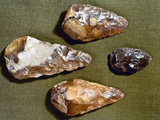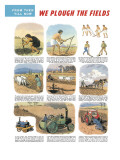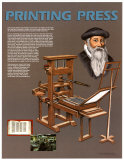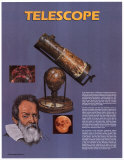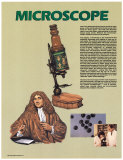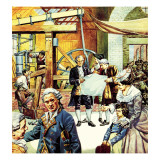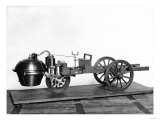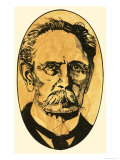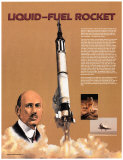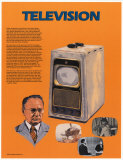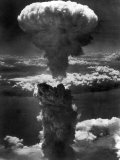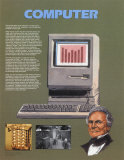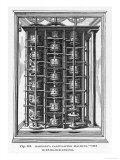|
|
|
|
|
|
|
|
|
|
|
|
BOOKS ABOUT
INVENTIONS & TECHNOLOGY
|
|
|
|
|
|
|
|
|
|
|
|
|
|
|
|
|
|
|
|
|
|
 |
|
|
|
|
Hand Tools - Inventions that Changed the World -
Most experts say that hand tools were the very first invention in human history. Hand tools may have been the most important invention in history as well. For it is the use of tools that separates humans from most other animals on Earth. And it is the ability to make and use tools that has allowed humans to create all other inventions, and to change the face of the planet forever ...
The earliest tools devised by humans were simply pieces of rock which were struck with other rocks in order to chip or flake away sections to form a sharp edge. this process was used to make everything from axes for killing small animals to scrapers for removing meat from animal bones. Around the year 20,000 B.C., humans began to make “composite” tools. These are tools that use more than one kind of material – such as the bow and the flint-tipped arrow. It was around this time that humans realized there were advantages in using handles on axes. As the world's population expanded, new tools were invented to aid in clearing the vast forest. During the ‘Neolitic,’ or New Stone Age period, new techniques were developed for drilling, grinding and polishing stone tools. But by 3000 B.C., bronze began to replace stone in the manufacture of some kinds of weapons and tools. The so-called “Bronze Age” lasted until about 1400 B.C. when toolmakers switched to iron.
Tools have always been found wherever humans lived and worked. Even today, there is probably no household in the world that does not have at least one kind of simple tool – whether it is a table saw, a hammer, a screwdriver, or just a simple can opener. Tools allow us to reshape and improve our environment, and they are the primary reason humans have come to dominate all other life forms on Earth.
|
|
|
|
Plough, Inventions That Changed the World -
|
|
|
|
Printing Press
Johann Gutenberg
b. 1398; Mainz, Germany
d. c. 2-3-1468
Some people believe that printing has had more of an impact on the world than any other invention in history. It is hard to argue with this view. After all, printing freed humanity from its greatest enemy: ignorance.
The art of printing goes back thousands of years to the time when early humans first pressed carved desings into wet sand. But printing as we know it today only has been around for a few hundred years. Early in the 15th century people in Europe were still copying books by hand. People called scribes could spend years making a single copy of a book. And these books were available only to a few wealthy and educated people. But in the year 1440, a German metalworker named Johannes Gutenberg ... developed a workable method of printing using “movable” type. Movable type is really just small pieces of metal with raised letters on one end. Gutenberg adapted a wine press into a press for printing. He laid his pieces of type in a special tray with the letters facing up. Then he inked the letters and placed a sheet of paper on top of them. He slid the tray under a wooden press that could be lowered by pulling on a handle. With his press, which is shown in the drawing, Gutenberg could print 300 pages a day. The first book he produced on hs press was the magnificent Gutenberg Bible.
Gutenberg's press meant that books were no longer as expensive to make or own. Suddenly, knowledge was available to more than just the wealthy and privileged. Gutenberg's “simple” invention changed the course of human history. As one historian has said “The modern world began with the printing press.”
• history of posters
• Benjamin Franklin posters
|
|
|
|
Telescope
In its simplest form, a telescope is nothing more than a hollow tube with a piece of glass at each end. And yet this simple instrument has completely changed the way we think about the universe – and our place in it. The invention of the telescope is still something of a mystery. No one knows for sure who built the first telescope. But most experts give the credit to a Dutch optician named Hans Lippershey, to patented a device he called an “eye glass” in 1608.
The first telescope was not very powerful, but it inspired many people throughout Europe to begin building their own telescopes. One of these people was an Italian scientist named Galileo Galilei, shown here, in 1610. Galileo built a telescope that magnified images 30 times. Galileo's telescope, like most early telescopes, was of the type known as a “refractor.” Refracting telescopes consist of a tube or tubes with a front lens to collect and focus the light and a rear eyepiece lens to view the image. In the mid-1600s, scientists began experimenting with “reflecting” telescopes. Reflectors use a large mirror to gather and focus the light through an eyepiece. The telescope shown here is a reflector built by Isaac Newton around 1670.
The invention of the telescope completely altered mankind's view of the universe. With the telescope, scientists could see that other planets existed. They could see that the sun was only one of billions of stars in the galaxy, and that the universe was filled iwth other galaxies. These discoveries helped people realize that Earth is NOT the center of the universe, and they raised the possibility that life might exist elsewhere. In a way, the invention of the telescope marked the beginning of human exploration of space. From the moment Galileo first aimed his telescope at the night sky, humans have longed to visit other worlds. And this longing continues to pull us toward the stars.
• eye anatomy posters
• more Inventions that Changed the World posters
• Nicolaas Hartsoeker
|
|
|
|
The Microscope -
Just as the telescope opened up the world of outer space, so the microscope lead to the discovery of the world of “inner space.” And with this discovery came a new and better understanding of how the human body works. Without the microscope, modern medicine would not be possible.
Very simply, a microscope is any instrument that magnifies extremely small objects so they can be seen easily. The earliest microscopes were nothing more than glass globes filled with water and used by engravers about 3,000 years ago. But the modern microscope can be traced back to the development of the so-called “compound” or “multiple lens” system of the late 1500s. Two Dutch lensmakers named Hans and Zacharias Jannsen made a compound microscope by placing a magnifying lens at each end of a sliding tube. But the real credit for using the microscope as an instrument of science goes to Dutch amateur biologist Anton van Leeuwenhoek, shown here. Leeuwenhoek spent countless hours making lenses and assembling microscopes by hand. His microscopes used only one lens, but they still produced a better image than the compound microscopes of the time. With his devices, Leeuwenhoek examined pond water, blood cells, and muscle fibers. He called the tiny creatures he observed “animalcules,” noting that they were “1,000 times smaller than the eye of a louse.” Because Leeuwenhoek was the first person to record what he saw through the microscope, he is often called the “father of microbiology.”
Thanks to the microscope and the work of pioneers like Leeuwenhoek, scientist were able to discover the true causes of many diseases. This led to countless medical breakthroughs – such as vaccines, which have virtually wiped out once-dreaded diseases like smallpox and polio.
|
|
|
|
Steam Engine
James Watt
b. 1-19-1736; Greenock, Renfrewshire, Scotland
d. 8-19-1819; Handsworth, Birmingham, England
Contrary to a popular old story, the Scottish inventor James Watt, shown here, did not get the idea for his steam engine while watching steam blow the lid off a tea kettle. Instead, the idea came to him one afternoon as he strolled the grounds of the University of Glasglow. But Watt was not the first person to build a working steam engine. That credit properly belongs to an inventor named Thomas Newcomen, who buildt a steam-powered pump in 1712.
Newcomen's engine, like all steam engines, works on the principle that when steam cools down and condenses back into water, it takes up less space. If the condensation takes place in a sealed container, a vacuum, or sucking action, is created. Newcomen's engine used this sucking action to move a piston up and down inside a cylinder. The piston in turn worked a pump that was used to remove water from underground mines. But James Watt realized that a lot of energy was being wasted by heating and cooling he cylinder on every stroke. Watt made several changes in Newcomen's design that helped to greatly increase the power and efficiency of steam engines.
The invention of the steam engine changed the nation almost overnight. Steam power was suddenly put to work in everything from trains to factories. In many ways, the steam engine made the Industrial Revolution of the 1800s possible. And it was the Industrial Revolution that transformed our society from one in which most people farmed for a living to one in which most people worked in factories and offices. In one sense, the steam engine began the process of separating the "haves" from the "have nots." The nations that were able to take advantage of steam power went on to become world powers. Those that did not take part in the steam revolution were left behind, and many of them are still trying to catchup.
• Joseph Black - discovers latent and specific heat, and carbon dioxide.
|
|
|
|
The Electric Light-
Thomas Edison
b. 2-11-1847; Milan, OH
d. 10-18-1931; Florida
We probably all take the electric light for granted. A simple flick of a switch is all it takes to produce a warm glow for reading, studying, or just relaxing. But if you've ever experienced a power “blackout,” you know how much we have come to rely on the electric light. Without it, humans would be “in the dark” in more ways than one.
Like many inventions, the electric light resulted from the efforts of many individuals. In the early 1800s, scientists came to understand much about a strange new energy source known as electricity. During the mid-1800s, a number of inventors tried to use this energy to create light. A few succeeded, but the lights they developed required a great deal of power and burned out very quickly. For electric light to be practical someone had to devise a cheap means of bringing electricity into people's homes. This was done by the brilliant American inventor Thomas A. Edison, shown here, in 1879, at his laboratory in Menlo Park, New Jersey. Edison developed an electric light that used sewing thread as a filament. Before this thread was placed inside a bulb, it was “carbonized” – that is, burned to an ash. Edison's bulb produced a steady glow that burned for hours. Later, in 1882, Edison designed the first power station to supply homes with cheap electricity of lighting.
The invention of a practical and inexpensive electric light changed life in many ways. Factories and offices could not operate 24 hours a day. And homes that once relied on flickering candles or dim kerosene lamps for light now glowed brightly well after sunset. In a sense, the electric light made possible our modern world – with its spectacular skylines, lighted outdoor stadiums, and “open all night” restaurants.
|
|
|
|
The Automobile
One hundred years ago, automobiles were so new and so strange that they were shown in circuses. Today, most families own at least one car, and many own two or more. In many parts of the world, the automobile has become a necessity, and people can no longer imagine life without it.
Most of the world's automobiles are in the United States. But the automobile is not an American invention. The first road vehicles that could travel by themselves were built in France in the 1700s, and were powered by steam. Steam cars were unsafe and not very practical. Around the turn of the century, electric cars became popular. People liked them because they were quieter and did not give off smelly clouds of smoke. The gasoline engine used in most automobiles today was developed in Germany in 1885. That year a man named Karl Benz put a gas engine on the three-wheeled carriage. This became the first true gas-powered automobile.
For the most part, the first automobiles were a luxury that only the rich could afford. The man most responsible for changing this was Henry Ford. Ford believed that everyone should be able to own an automobile. To make his cars more affordable, Ford made many improvements in the ‘assembly line’ process invented by Ransom Olds. In 1908, Ford introduced the Model T, which quickly became the most popular car in the nation.
By making the automobile affordable for nearly everyone, Ford changed the face of the nation. The automobile led directly to the development of the modern suburb. Suddenly people who worked in the city no longer had to live there as well. The automobile forever altered the way people think about distances. In the past, a journey of several hundred miles was a major undertaking. Today, many people routinely drive that far in a single day. The automobile has made people less isolated, and in that sense it has made the entire world smaller and brought us all closer together.
|
|
|
|
Liquid-Fuel Rocket
Robert H. Goddard
b. 10-5-1882; Worcester, MA
d. 8-10-1945, Baltimore, MD
It is hard to believe, but the most important flight in the history of space travel may have been the one that took place on a Massachusetts farm on March 16, 1926. The flight lasted only 2.5 seconds and reached a height of only 41 feet. But it marked the first successful test of a new invention – the liquid fuel rocket.
The very first rockets were probably made in China about 700 years ago. But these first rockets were little more than tubes filled with gunpowder. The idea that rockets would be propelled by liquid fuels first appeared in a 1903 paper on space travel written by a Russian school teacher named Konstantin Tsiolkovsky. Like many great inventors, Tsiolkovsky was ahead of his time. He never was able to actually build his liquid-fuel rockets.
That task fell to one of the great unsung heroes of America's space program – Robert H. Goddard, shown here. Dr. Goddard had dreamed of space travel ever since he was a boy, and he was intrigued by Tsiolkovsky's theories. He set up a small laboratory in Massachusetts and with a handfull of assistants built the first working liquid-fueled rockets. It seems amazing today, but Dr. Goddard's successful rocket experiments drew little interest and no support from the government.
It was only after the Germans used Dr. Goddard's designs to build the V-2 rocket bomb that the U.S. government finally took notice. By the early 1960s, rockets like the one shown here were carrying men into space. And a mere forty-three years after that first short flight, the gigantic Saturn V lifted three U.S. astronauts into space and launched them on a journey to the moon.
We have probably only begun to see the potential of the rocket to change the world. The rocket has already opened up vast new horizons of knowledge to us and in the next century –who knows? – your own grandchildren or great grandchildren may be living in a colony on Mars.
• aviation posters
• physicists posters
|
|
|
|
Television
Inventions that Changed
the World -
Today, 98 percent of all homes in the United States have at least one television. That is more homes than have interior plumbing! and in the average American household, the TV set is on for mearly seven hours every day. This means that television may well be the single most important source of information for most people – and one of the most powerful forces in shaping and influencing the moods and trends of our society. Television has not only brought history into our homes, it has at time altered the course of history.
No one person can be given the credit for inventing television. Many people contributed to its development. Television became possible when scientists learned how to send communication signals through the air by means of electromagnetic waves. This discovery lead to the invention of radio. But it was not long before a handful of scientist began working on ways to transmit pictures as well as sound. The most important contribution to the development of television were made by a Russian-American named Vladimir Zworykin, who is shown here. In 1923, Zworykin invented the first electron TV camera tube and the first TV picture tube. Zworykin demonstrated his system in 1929, and the first regular TV broadcasts began in 1936. After World War Two, the demand of TV sets became enormous. By 1960, there were 60 million sets in American homes.
Over the years, television has done much to inform and enterain people all over the world. In the 1960s and 1970s, television brought the Vietnam War into American living rooms. And it has changed forever the way governments and elections are run. The fact that people can sit in their living rooms and observe events on the other side of the world – as they happen – has turned the Earth into what social critic Marshall McLuhan called “a global village.”
Philo T. Farnsworth
b. 8-19-1906; Utah
d. 3-11-1971
|
|
|
|
The Atomic Bomb
Inventions that Changed
the World -
At 8:16 in the morning, August 6, 1945, in a blinding flash of light, the world changed forever. Humankind entered a new era, symbolized by a mushroom-shaped cloud rising seven miles into the air over the city of Hiroshima, Japan. The Atomic Age had begun.
The atomic bomb was the most destructive invention ever created. Yet it was made possible by a scientific breakthrough with enormous potential for good. The breakthrough really began early in the 20th century, when a German scientist named Albert Einstein developed his Theory of Relativity. That theory predicted that the destruction of tiny amounts of matter, or “mass,” would release enormous amounts of energy – according to the famous equation E= mc2. Scientists soon learned a way to convert mass into energy – a way known as nuclear fission, or “atom-splitting.”
When the nucleus of an atom is split, a tiny amount of matter is converted into a tremendous amount of energy. This process can be controlled and used to produce useful energy, as in a nuclear power plant. But if the reaction runs wild, the result is a nuclear explosion. The first atomic bomb was built by a team of scientist headed by the American physicist J. Robert Oppenheimer, shown here with Einstein. These scientists feared that Germany's Adolph Hitler might get the bomb first. Today, a single nuclear missile can carry bombs a thousand times more powerful than the one dropped on Hiroshima. This frightening power has altered the way nations deals with each other, and it has changed forever the way we think about the future of our entire planet. As one scientist put it: “With the creation of the atomic bomb, the human race became an endangered species.”
• Marie Curie Posters
• Table of Elements Poster
• World War II Posters
• “The release of atomic energy has not created a new problem. It has merely made more urgent the necessary solving of an existing one.” ~ Albert Einstein
• Helen Caldicott print
|
|
|
|
The Computer
Inventions that Changed
the World -
Most people think of the computer as a fairly recent invention. But the first "computers" were actually built hundreds of years ago!
Many experts say the very first computing device ever made was the abacus, which was in use more than 2,000 years ago. In 1642, the mathematician Blaise Pascal invented a device that used gears and dials to solve complex addition problems. But the true “father” of the modern computer was a brilliant math teacher from England named Charles Babbage. Babbage, who is shown here, designed a machine in 1833 that was more than a century ahead of its time. He called his machine a “difference engine,” and it performed long mathematical calculations. Then he thought up and designed a machine that would perform even harder calculations. He called it an “analytical engine.” It stored information in a “memory” and was operated by means of cards with holes punched in them. But it was so complicated that the best engineers of the time could not build it.
The next great advance in computers was the construction of ENIAC –the Electrical Numerical Intergrator and Calculator – in 1946. ENIAC was the first general-purpose electronic digital computer. Altogether, it was 100 feet long and teen feet tall, and it weighted 30 tons. In the 1970s, the introduction of the microchip helped reduce the size of computers. Thanks to microchips, today's desktop computers can do much more than the room-sized ENIAC, and they can do thing many times faster.
Today, it is hard to imagine a world without computers. Computers are used in many simple, everyday routines, from making a telephone call, to going thorough supermarket checkout line, to putting money in a bank account. And more complicated activities, such as operating weapons systems, controlling air traffic, and monitoring surgical procedures, are also dependent on computers. Computer networking allows for nearly instantaneous worldwide communications and access to information. And computers have speeded up innovations in nearly every field.
• Grace Hopper posters
|
|
previous page | top
INVENTIONS THAT CHANGED THE WORLD | 2 | machine trades
| Black Innovators series | vocational education
|
|
I have searched the web for visual, text, and manipulative curriculum support materials - teaching posters, art prints, maps, charts, calendars, books and educational toys featuring famous people, places and events - to help teachers optimize their valuable time and budget.
Browsing the subject areas at NetPosterWorks.com is a learning experience where educators can plan context rich environments while comparing prices, special discounts, framing options and shipping from educational resources.
Thank you for starting your search for inspirational, motivational, and educational posters and learning materials at NetPosterWorks.com. If you need help please contact us.
|
|
|















